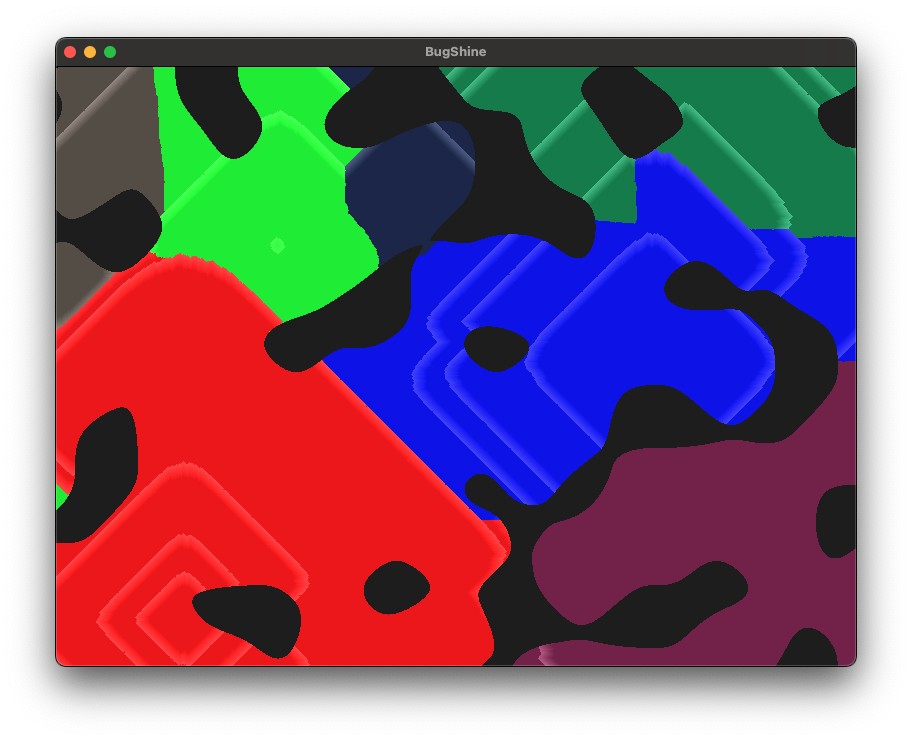Ludum Dare? That’s been a while!
I didn’t actually enter the game jam. Honestly, I wasn’t sure I was going to write anything. But I had a bit of an idea and spent a few hours only on Sunday hammering something out:
Yeah, I did another cellular automata thing 😄
It’s not at all complete, but the basic idea is:
- Generate a random level
- See it with multiple players (colonies of bugs)
- Each bug will send out waves of ‘shine’, expanding their territory
- Take over the map to win
It’s sort of got that?
I’m using Rust as I’ve been doing a lot recently.
The main libraries are:
- pixels for the rendering; it gives me direct access to a pixel buffer, which is my favorite
- winit for windowing; this did require the feature
rwh_05to be properly compatible withpixels, which took a minute to track down
Other than, that, it’s straight custom code which you can see in it’s entirety on my github.
- main.rs - creates the window and handles input
- world.rs - runs the simulation mostly in an
updatefunction; with generation innew
I think that perhaps the only really interesting bit about the code is how the ‘shine waves’ work. Basically, I have a grid of the state of each cell, but I also have a Vec that tracks ‘active’ pixels. Those are the only ones that can update–which both helps performance and makes the simulation appear the way it does.
Overall, a nice quick project. More than anything, it actually convinced me to try setting up something that can render pixel buffers on Rust. And with a (very minimal) GUI, too! Both things I’ve been meaning to learn.
I probably won’t do anything more with this code, but it’s got the seeds of something more interesting. Keep an eye out. 😄
Onward!
